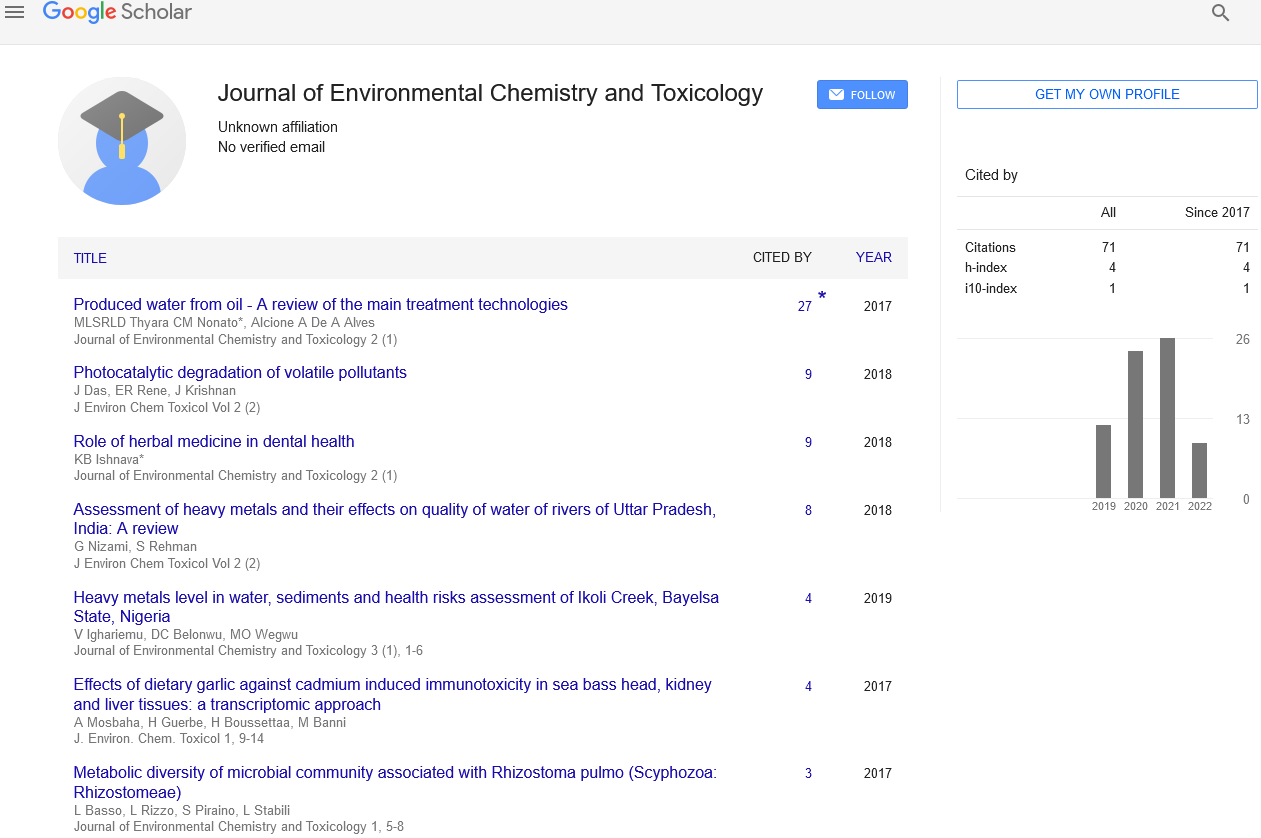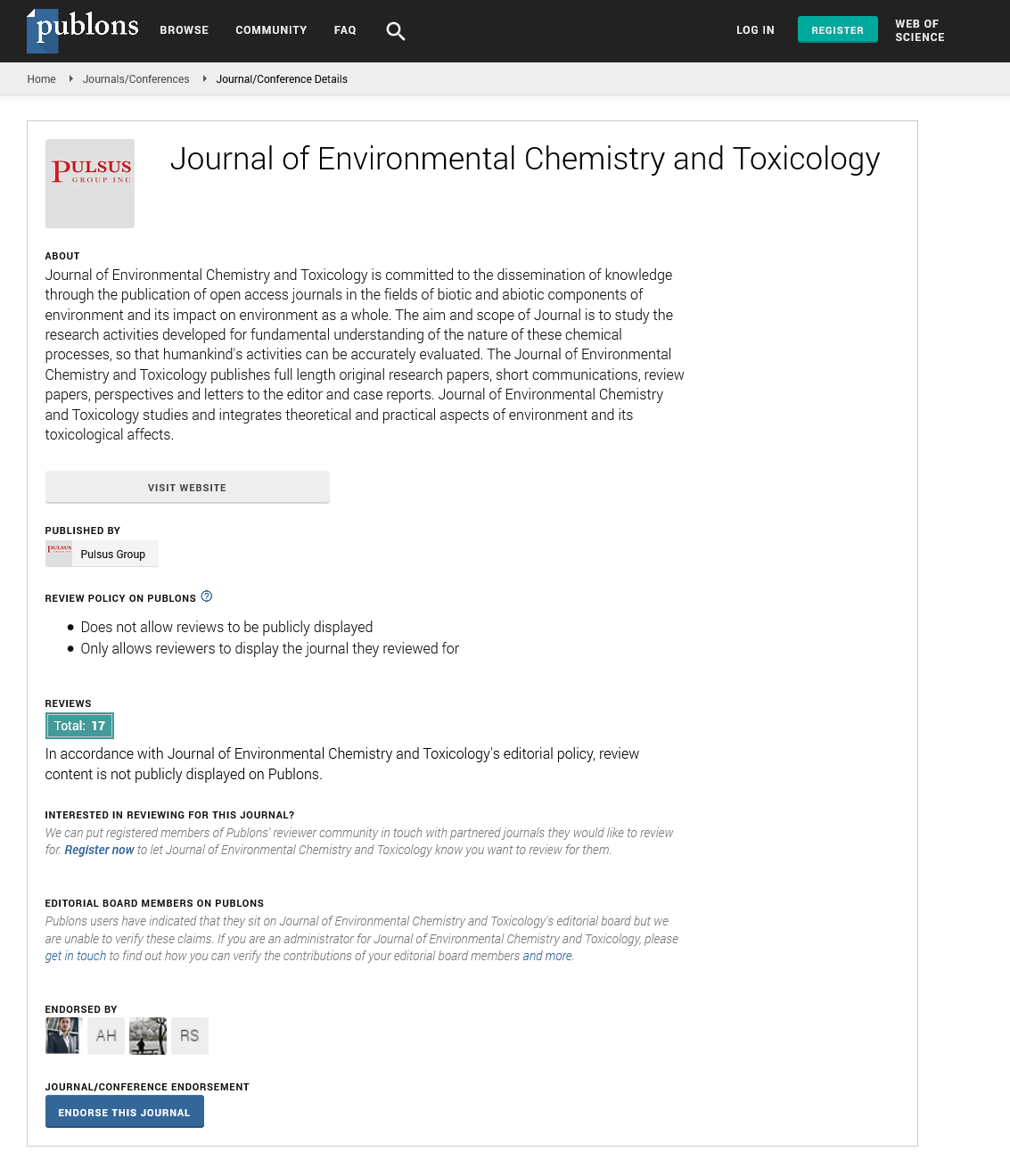Preparing for the next big oil spill at sea: A microbiological perspective
Received: 19-Mar-2018 Accepted Date: Mar 24, 2018; Published: 30-Mar-2018
Citation: Gutierrez T. Preparing for the next big oil spill at sea: A microbiological perspective. J Mar Microbiol. 2018;2(1):13-14.
This open-access article is distributed under the terms of the Creative Commons Attribution Non-Commercial License (CC BY-NC) (http://creativecommons.org/licenses/by-nc/4.0/), which permits reuse, distribution and reproduction of the article, provided that the original work is properly cited and the reuse is restricted to noncommercial purposes. For commercial reuse, contact reprints@pulsus.com
Oil spills at sea are one of the most disastrous of anthropogenic pollution events. Due to the ability of oil to spread for many miles in seawater their impact on ecosystems far exceeds that of spills in terrestrial environments. Whilst natural seeps are the largest source of oil input into the sea, medium to large (>7 tons) accidental spills can cause significant damage to marine ecosystems and the economies that depend on them. For many years it had not been technologically or economically feasible for oil companies to drill for oil in deep waters, with most offshore drilling occurring in waters within continental margins (often <200 m water depths). With surging oil prices and sophisticated technological developments, exploration and production in deeper water provinces has accelerated in recent years, with the pace of deep water drilling having increased by 40% in just the last three years. With oil exploration moving more into deeper waters, the unpredictability of the behavior of spilled oil and current lack of experience and know-how in dealing with a deep-sea spill raises considerable concerns. This was clearly highlighted by the recent Deep water Horizon spill of April 20, 2010, that released ca. 700,000 tons of oil into the Gulf of Mexico. Deep water Horizon was unprecedented due to complexity of the spill and clean-up response, and has been marked as the worst oil spill in the history of the oil and gas industry. Whilst the incidence of oil spills at sea has decreased significantly over the past 44 years (www.itopf.com), their incidence in deep waters is predicted to increase as oil exploration operations move further into deeper waters. A great deal has been learned from the Deepwater Horizon spill, but it also highlighted the extent of our ignorance and the need to better understand oil behaviour in the deep sea, its effect on subsurface ecosystems, and the importance of developing response strategies for spilled oil in deep water provinces.
Of the estimated 7 x 105 tons of oil and gas that entered the Gulf of Mexico, a large volume (~68%) was estimated to have become dissolved or dispersed in the water column [1], of which one-third became entrained at ~1000- 1200 m depth that formed an oil plume spanning an impressive 35 x 2 x 0.2 km [2]. The fate of oil in the environment is largely dictated by the presence and activities of natural communities of oil-degrading bacteria, most of which belong to the order Oceanospirillales, and includes Alcanivorax, Cycloclasticus, Oleispira, Oleiphilus and Thalassolituus [3]. These organisms are almost always found enriched following an oil spill and they lie at the heart of natural and anthropogenic oil-spill remediation, and are hence critical to restoring oil-impacted ecosystems to their natural state. Whilst a significant effort was made to monitor and track the microbial response and degradation of the oil in the water column, the lack of a baseline on the microbiology of the Gulf of Mexico confounded scientists’ abilities to provide an accurate measure for how the system had responded compared to pre-spill conditions. This highlighted the need for long-term microbial ocean observatories in regions prone to a high risk of oil spills. A microbiological baseline has been acknowledged as a major “knowledge gap” in a number of reports, including OSPAR (Oslo & Paris) Commission (www.ospar.org) and the preliminary assessment of the EU Marine Strategy Framework Directive (MSFD) (2008/56/EC). Such reports focus on areas of the northeast Atlantic and its adjacent waterways, including where the oil and gas industry operate, and highlight a paucity of knowledge on the baseline microbiology in the water and sediment.
Pollution from crude oil and its refined products has been a significant concern with respect to natural ecosystems of the region and to important economic activities (e.g. aquaculture and fisheries) that depend on these. Considering that bacteria are fundamental to the ultimate removal of petrochemical pollutants, it is surprising that a microbiological baseline is lacking for regions where the oil and gas industry operate and where there is a high potential risk for spills. Few studies have reported on the water column and benthic microbiology for the NE Atlantic, but even so the information from these has yielded a mere ‘snap-shot’ of the microbiology in these waters. It should be a matter of urgency to produce a temporal pre-spill baseline on the microbiology, including information on the capacity of indigenous microbial communities to respond to oil, for regions that may be prone to oil spills. This information is prerequisite for the design of effective bioremediation strategies. Arguably, one of the most effective bioremediation techniques involves the provision of inorganic nutrients, (nitrate and phosphate), since the in-situ concentrations of these nutrients in seawater and sediment are known to limit crude oil biodegradation. Their addition has been shown to stimulate and positively influence the activities of oil-degrading microorganisms [4-6], including following the M/V Exxon Valdez oil spill [7]. Indeed, nutrient availability is recognized as possibly the single most important factor in controlling the microbial response to perturbations in deep waters of the NE Atlantic [8].
Dispersants, on the other hand, are now commonly used for treating oil spills at sea, though there is little information in the literature on their efficacy in terms of promoting biodegradation in the marine environment. During the Deepwater Horizon oil spill, ca. 3,000 tons of synthetic dispersant (Corexit-9500) were applied at the wellhead to promote formation of small, slow-rising droplets, but little is known of its influence upon the microbial community response and degradation of the oil. Some studies have shown that the use of Corexit, for example, inhibited the enrichment of some oil-degrading bacteria [9-11]. This inhibitory effect could be due to a chemical component(s) of the Corexit formulation, an increase in the soluble concentration of toxic hydrocarbon compounds due to the presence of the dispersant, and/or competition by other oil-degrading bacteria that are more resilient in the present of the dispersant. Whilst the environmental impact and fate of dispersant usage continues to be a topic of debate, these results highlight the importance of having prior knowledge on their efficacy, particularly upon the activities and biodegradation rates of oil-degrading bacteria – information that would guide decisions on their application in maritime oil-spill contingency plans.
How oil-degrading communities respond to oil contamination and the conditions influencing their activities can differ substantially both in space and time in the global ocean. Therefore, the development of a site-specific and effective bioremediation strategy, including pre-defined nutrient and/ or dispersant applications, would need to be based on a thorough integrated knowledge of the local microbial community and environment to which this technology is to be applied.
REFERENCES
- Lubchenko J, McNutt M, Lehr B, et al. Deepwater horizon/BP Oil budget: What happened to the oil? National Oceanic and Atmospheric Administration. 2010.
- Camilli R, Reddy CM, Yoerger DR, et al. Tracking hydrocarbon plume transport and biodegradation at Deepwater Horizon. Science. 2010;330:201-04.
- Head IM, Jones DM, Röling WF. Marine microorganisms make a meal of oil. Nat Rev Microbiol. 2006;4:173-82.
- Atlas RM, Bartha R. Degradation and mineralization of petroleum in sea water: limitation by nitrogen and phosphorous. Biotechnology and Bioengineering. 1972;14(3):309-18.
- Shimp RJ, Pfaender FK. Influence of easily degradable naturally occurring carbon substrates on biodegradation of monosubstituted phenols by aquatic bacteria. Applied and environmental microbiology. 1985;49(2):394-401.
- Ercolini D. PCR-DGGE fingerprinting: novel strategies for detection of microbes in food. J Microbiological Methods. 2004;56(3):297-314.
- Lukas R, Lindstrom E. The mixed layer of the western equatorial Pacific Ocean. J Geophysical Res: Oceans. 1991;96(S01):3343-57.
- Turley C. Bacteria in the cold deep-sea benthic boundary layer and sediment-water interface of the NE Atlantic. FEMS Microbiol Ecol. 2000;33:89-99.
- Rahsepar S, Smit MPJ, Murk AJ. Chemical dispersants: Oil biodegradation friend or foe? Marine Pollution Bulletin. 2016;108:113-19.
- Hamdan LJ, Fulmer PA. Effects of COREXIT EC9500A on bacteria from a beach oiled by the Deepwater Horizon spill. Aquatic Microbial Ecology. 2011;63:101–09.
- Kleindienst S, Seidel M, Ziervogel K. Chemical dispersants can suppress the activity of natural oil-degrading microorganisms. Proceedings of the National Academy of Sciences. 2015;112:14900-05.






